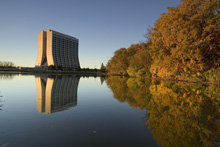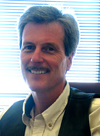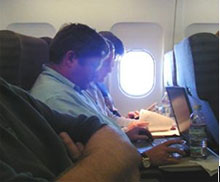
Monday, February 13
2:30 p.m. Particle Astrophysics Seminar -
Curia II
Speaker: A. Cumming, McGill University
Title: Long Thermonuclear X-Ray Bursts: A New Probe of
Neutron Star Interiors
3:30 p.m. Director's Coffee Break - 2nd Flr X-Over
4:00 p.m. All Experimenters' Meeting - Curia II
Special Topics: MiniBooNE Neutrinos at MINOS; Niobium for SRF Cavities
Tuesday, February 14
11:00 p.m. Academic Lecture Series -
Curia II
Speaker: B. Kayser, Fermilab
Title: The New World of Neutrino Physics - III (3rd Lecture)
3:30 p.m. Director's Coffe Break - 2nd Flr X-Over
4:00 p.m. Accelerator Physics and Technology Seminar -
1 West
Speaker: A. Dragt, University of Maryland
Title: Computation of Transfer Maps
|



Monday, February 13
-Wisconsin Cheese
-Corned Beef Reuben
-Stuffed Chicken Breast
-Shepherd's Pie
-Turkey Craisins Wrap
-Meatlover's Pizza
-Pacific Rim Rice Bowl
The Wilson Hall Cafe accepts Visa, Master Card, Discover and American Express. Wilson Hall Cafe Menu |
 |
Wednesday, February 15
Lunch
-Catfish w/Course Mustard
-Roasted Corn & Red Pepper
-Spicy Tomato Rice
-Pecan Pie
Thursday, February 16
Valentine's Day Dinner
-Red Pepper Souffle w/Julienne of Zucchini
-Lobster Medallions w/Champagne Butter Sauce
-Green Beans w/Dill
-Lemon Grass Rice
-Chocolate Hearts w/Raspberry Sauce
Chez Leon Menu
Call x4512 to make your reservation. |


|
 |
Lab, Community, Economy:
An Interconnected Vitality
|
 |
|
Fermilab's 2,000 employees contribute to the local ecomony. (Click image for larger version.)
|
|
|
Fermilab contributes to the local economy in more ways than most people realize, according to Fermilab business manager David Carlson. The lab most obviously contributes through employment and procurement, which Carlson called the lab's "near-term impact." It employs over 2,000 people (not including subcontractors). Employees earn a combined salary of $145 million, and they contribute to the local economy whenever they spend money in the towns near the lab: buying houses, cars, even groceries.
Regarding procurement, Carlson explained, "Federal government policy is to encourage businesses within certain socio-economic categories to grow and thrive, and because Universities Research Association, Inc. (URA) is a prime government contractor, we carry out those policies." Procurement funds in 2005 included over $48 million to small businesses and $13 million to woman-owned businesses. Over $60 million went to Illinois firms.
Even more important may be the long-term economic impact, which hinges on
 |
| Dave Carlson |
Fermilab's mission: advancing the understanding of the fundamental nature of matter and energy. "We're producing knowledge," Carlson said. "We have no idea what economic benefits it may bring down the road." He cited the discovery of the electron in 1897 by J.J. Thomson as an example. While the electron may have been an outrageous idea to the public (and to other scientists) at the time, The Economist declared in 2000 that "quantum phenomena featured in current technology accounts for a quarter of America's Gross National Product."
"We're constantly pushing industry to the edge of what they can do," Carlson added. "The superconducting niobium-titanium wire we requested for the Tevatron paved the way for the wire in the magnets in many of the world's MRI machines today."
—Dawn Stanton
|

Chicago Sun-Times,
February 10, 2006:
U.S. seeks bids on managing Fermilab, Argonne
West suburban Fermilab, the world leader in subatomic physics, is about to get new management as it faces a critical crossroads.
Since it began in 1967, Fermilab has been managed by a consortium of universities for the federal government, which pays the bills.
But now the U.S. Energy Department is putting out to bid the management contracts of Fermilab and other federal labs.
Read More
|

Institute of Physics,
February 10, 2006:
Theorists claim dark energy does not exist
Most cosmologists believe that the universe is dominated by "dark energy" - a mysterious form of energy that could explain why the universe is expanding and accelerating at the same time. Now, however, theoretical physicists have studied a new model of gravity that can, they claim, account for the acceleration of the universe without any need for dark energy. Their model relies instead on modifications to the way that gravity behaves at ultra-large cosmological distances (Phys. Rev. Lett. 96 041103).
The acceleration of the universe is driven by something that has repulsive rather than attractive gravitational interactions. Although this so-called "dark energy" is thought to account for around two-thirds of the universe, no one knows what it is made of. Possible explanations for dark energy include a "cosmological constant" - first introduced by Einstein - or something known as quintessence. However, such explanations are plagued with theoretical and phenomenological problems and scientists would like to find an alternative to dark energy as the source of the universe's acceleration.
Olga Mena and Josť Santiago at Fermilab and Jochen Weller of University College London have now calculated that the acceleration of the universe can be explained without the need for dark energy. What they have done is to modify the laws of gravity in such a way that they look relatively unchanged at short distances but get modified only at distances on the order of the current size of the observable universe - the only place where the effects of the acceleration are apparent. At these distances the curvature of space is so small that the universe appears flat.
Read More
|
|  |
 |
Deep Vein Thrombosis
|
 |
|
Extended travel can cause blood clots that lead to deep venous thrombosis. In late 2005, two Fermilab employees suffered DVTs during air travel for work.
|
Deep venous thrombosis (DVT) occurs when a blood clot forms in a deep vein, usually in the lower limbs. Pulmonary embolism can result if a fragment of the clot breaks loose and migrates to the lungs. This can lead to severe breathing difficulty and even death. Certain factors increase your risk of having a DVT: being over 40, being obese or having had a previous DVT. One factor that has received significant attention is long-distance travel. Indeed, during a three-week period in late 2005, two Fermilab employees suffered DVTs during air travel for work. One of the employees developed pulmonary embolism. Fortunately, both responded favorably to treatment and are doing very well.
The following advice is offered to help minimize your risk of incurring a DVT during prolonged travel:
- Exercise your legs at least once an hour. To exercise your lower legs while sitting, pull your toes towards your knees, hold for at least 1 second, then relax, repeating this process 30 times. Follow that by pressing the balls of your feet down while raising your heels, hold for at least 1 second, then relax, again repeating 30 times. Make sure the involved muscles tighten appreciably.
- Clothing should be loose-fitting, except socks, which should be the kind that provides therapeutic compression.
- Keep your legs uncrossed and feet elevated.
- Drink plenty of fluids, preferably water, to avoid dehydration.
- If you have any significant health conditions, consult with your personal physician and/or the Fermilab Medical staff prior to travel.
More information
Safety Tip of the Week Archive
|


Add Your Name to NALWO Mailing List
Women can have their names added to the NALWO mailing list by contacting Kathy Johnson at kjohnson@fnal.gov, by mailing contact information to NALWO, c/o Kathy Johnson, MS111, or in person at Kathy's office in Wilson Hall, first floor. They can also subscribe through the NALWO webpage at by using the on-line form.
Rocketry Meeting
The Fermilab Association of Rocketry is having their monthly
club meeting on February 15, 2006 at 5 p.m. in the Users Center TV
room. We are always looking for new members, so anyone interested
in model rocketry is most welcome.
Tonight: Antimatter Discussion on TV
Tonight, Feb. 13, at 7:00 pm, the History Channel channel presents the premier of part II of "Alien Engineering," a film about the science of a potential alien space ship. The show discusses antimatter and antimatter propulsion, laser weapons, transporters and the search for extra-terrestrial life. The film includes footage shot at Fermilab and short interviews about antimatter recorded last summer.
Scottish Country Dancing
Scottish Country Dancing will meet Tuesday, February 14, at Kuhn Barn on the Fermilab site. Instruction begins at 7:30 p.m. and newcomers are always welcome. Most dances are fully taught and walked through, and you do not need to come with a partner. Info at 630-840-8194 or 630-584-0825 or folkdance@fnal.gov.
GSA Formal Winter Ball
Tickets for the Graduate Student Association's first Formal Winter Ball,
to be held on Sat., Feb. 25, 8 p.m., go on sale today. Cost to attend
the ball is $5 per person and all are welcome. For more information,
please visit the Web
site. To purchase tickets, please contact GSA representatives Leah
Welty-Rieger, x3853 or lwelty@fnal.gov, or Tuula Maki, x8414 or
tmaki@fnal.gov.
Upcoming Activities |
|



